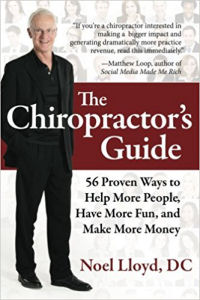Accept Your Role as a Teacher, Part VII
MBA Chiropractic ConsultingIn part VI of this series I continued the discussion from part V on the use of “visual aids’ to involve a number of your patients´ senses in order to better communicate difficult concepts. Now I will discuss using patient involvement to achieve greater retention in learning.
The Power of Asking Questions
Teachers can easily measure their teaching effectiveness by asking questions of their students on the material that was taught. When you are teaching someone, the power of asking questions will reveal how well you are doing. As a doctor, the answers that your patients give to your questions will tell you how well they understand what you have just explained to them.
It is during the report-of-findings and the patient´s subsequent office visits that the doctor plays his most important teaching role. Without prodding or intimidating the patient in any way, the doctor asks the patient those questions that will tell him how well the patient understands what he is trying to teach him. It is imperative that the doctor be patient and listen carefully to his patient´s response.
In responding to the doctor´s question, a patient must listen to the question, think of the answer and then verbalize the answer. This answering process involves several of the patient´s senses, which helps the patient retain what they have learned.
The power of asking questions is not only in the doctor being able to confirm how well his patients understand what he is teaching them, it is also in the affirmation that the patient realizes in verbalizing the correct answers.
Small Tests
A “small test’ procedure worked well in my practice. For example, during a patient´s visit I would explain where a particular nerve went from their spine and how it could affect this part of the body or that organ. I would tell the patient to remember that because I would test them on it later. Then, when I was palpating that same area I would ask, “Now Barbara, this is test time. Can you tell me what symptoms can be caused by the nerve at this level?’ The patient would usually remember and tell me the correct answer, then I would proceed to teach about another area.
The only reason a doctor´s knowledge of the sciences of the human body is so much greater than that of his patients´ is because he has studied it longer. Patients have the ability to gain this knowledge by being taught simply and with repetition. Imagine what it would be like to have all of your patients well taught on the subjects of whiplash, disc injuries, arthritis, subluxations, and nerves. Visualize all those people in your community teaching others about their new found knowledge? Any time the subject of pain would come up your patients would jump right in there and tell others what their doctor taught them. Your patient´s family and friends would be so impressed that they would come to your office for treatment. Imagine!
Involve the Patient
In a report-of-findings you have many opportunities to involve the patient in things to help them remember what you are teaching them. You might use a model of the spine and show them a spinal nerve and ask them to point to other ones. You might point to the picture of the occipital nerves and where they go and ask your patient what symptoms they think those nerves would cause if they were irritated and stretched from a whiplash injury. You might point to a disc in the spine and ask them to point out other discs. If you have the neurospinalpatholator you can have patients press the buttons to watch how the certain nerves affect the different muscles and organs.
In a health care class you can involve patients by teaching them how to give a posture exam. It is not hard for patients to understand that when you are not balanced it will cause dysfunction in the spine. With your help, patients can practice giving posture exams on each other. Your patients will want to share this knowledge by conducting posture exams on their family, friends and coworkers.
Conclusion
Questions, tests and patient involvement are useful techniques to help your patients learn and retain what you are teaching them. But it is also important to remember this next point - Only the very best of doctors do it, and these are the doctors who build large practices!
The Chiropractor's Guide: 56 Proven Ways to Help More People, Have More Fun, and Make More Money
Over the past four decades, Dr. Noel Lloyd has built and sold ten chiropractic businesses and developed dozens of successful associates. Today he runs two practice management companies that train hundreds of chiropractors around the world.
Here, for the first time in print, Dr. Lloyd is sharing his winning strategies. The Chiropractor’s Guide is packed with 56 cream-of-the-crop tips and systems for everything from attracting more patients to better managing your staff…and yourself.
These programs and procedures have been tested for tens of thousands of hours in hundreds of practices around the world, with proven results.
Are you ready for your best-ever year in practice? Start reading.
If you're a chiropractor interested in making a bigger impact and generating dramatically more practice revenue, read this immediately. - Matthew Loop, author of Social Media Made Me Rich
Anyone who follows the advice offered in this guide will be successful, period. - Gerard Clum, President Emeritus, Life Chiropractic College West